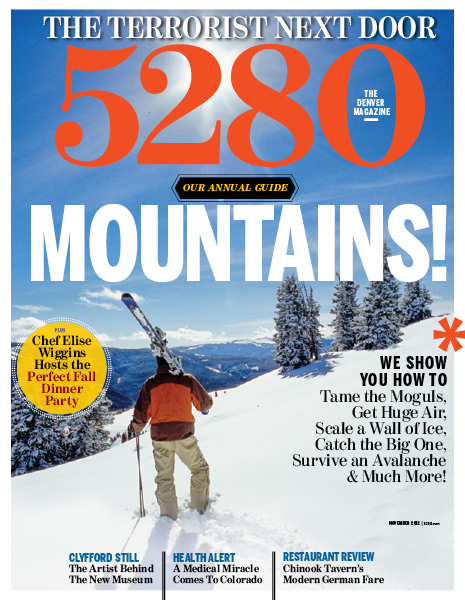The Local newsletter is your free, daily guide to life in Colorado. For locals, by locals.
Most hikers retire the boots come fall when the flakes start to fly in the high country, but even when the trails are buried in white, Colorado’s fourteener faithful dust off the snowshoes and continue hoofing up our 54 tallest peaks. We asked avid winter climber and 14ers.com contributor Scott Patterson for his take on the best nontechnical hikes when the Rockies freeze over. For safety reasons, it is imperative to carry an ice axe and have at least some avalanche training when hiking any fourteener in the snow.
Easy “er”
Just like in summer, Mt. Bierstadt (14,060 feet) and Quandary Peak (14,265 feet) are solid get-your-feet-wet hikes. The standard routes on both are seven-mile round-trips with mild exposure. Worried about avalanches? Although the journey is longer (11.2 miles round-trip), try Colorado’s highest summit, Mt. Elbert (14,433 feet). As long as you keep to the east ridge, risks are lower for a wall of snow to ruin your trip.
Not your first trip up the hill
Take the 7.5-mile Angel of Shavano round-trip route on Mt. Shavano (14,229 feet). Snow and wind patterns reveal an angel formation on the east face that guides you to the summit—look for her outstretched arms. The trail, at some points indistinguishable, either goes up the angel’s body or to a set of switchbacks. Either way, hit the East Ridge to summit. If the snow is thick and soft enough on the way down, you can slide down the slope (about 30 degrees) along the natural track on the angel’s body—use your ice axe to control your speed and know how to self-arrest when necessary—for a 1,500-foot “glissading” descent.
Winter warrior
Many difficult winter fourteeners require technical climbs and specific equipment. Without worrying about ropes, try Mountain of the Holy Cross (14,005 feet). The Tigiwon Road is closed all winter, which adds 9.5 miles to get to the trailhead. In springtime, consider skinning your way up and skiing your way down (11.5 miles round-trip); the route is typically too windblown for skiing in the winter.
Basic Must-Have Gear List
- Snowshoes/waterproof boots/gaiters—Above all, keep your feet dry.
- Headlamp—Lithium batteries perform better.
- Insulated water bottles—Liquid in CamelBaks will freeze.
- Hand/feet warmers—Critical during breaks.
- Emergency bivouac/extra layers—REI carries a 3.8-ounce bivvy for $16.
- Avalanche beacon/shovel/probe—Even if your hike is low-risk. Check outdoor stores for rentals.
- Ice axe—For icy slopes and glissading steeper faces.
* An earlier version of this article neglected to emphasize the safety
aspects of hiking fourteeners in the snow. You must always carry an
ice axe and should have at least some avalanche training when climbing
any 14er in the winter. If you plan to glissade, you must know how to
self-arrest using the ice axe. When hiking Mt. Elbert, the east
ridge (11.2 miles round-trip) is the standard, and usually safest,
winter route, not the northeast ridge. Finally, we did not indicate
that Mountain of the Holy Cross is typically better for spring skiing;
the route is often too windblown for skiing in the winter.









